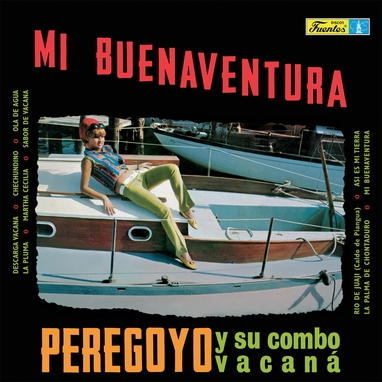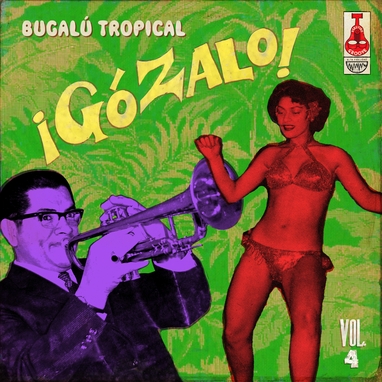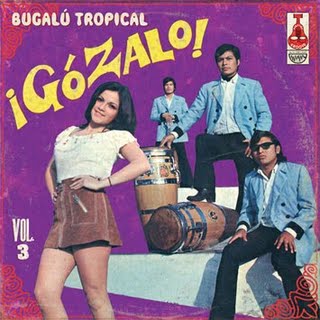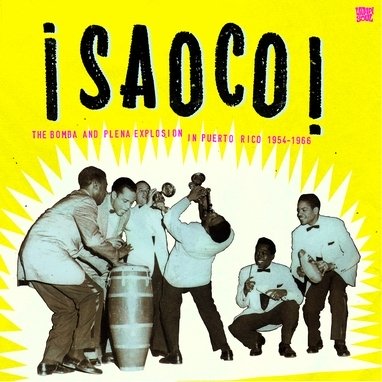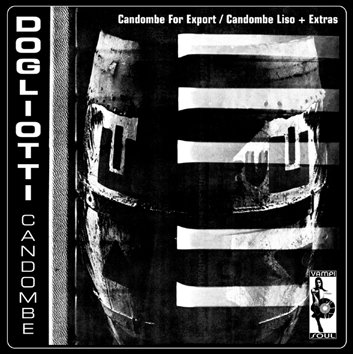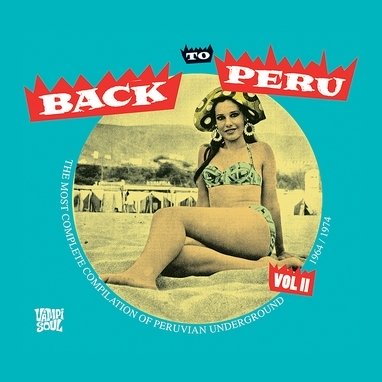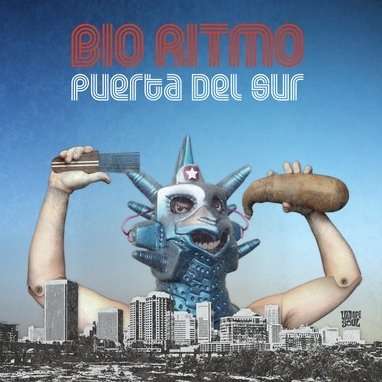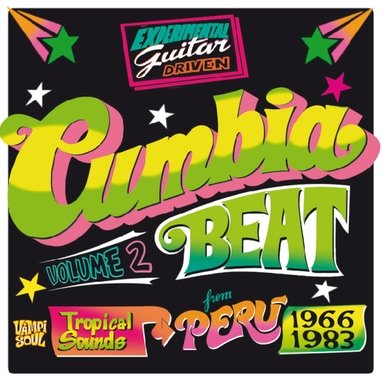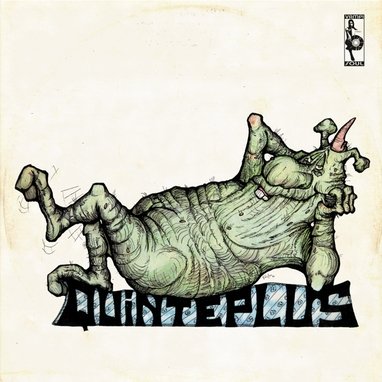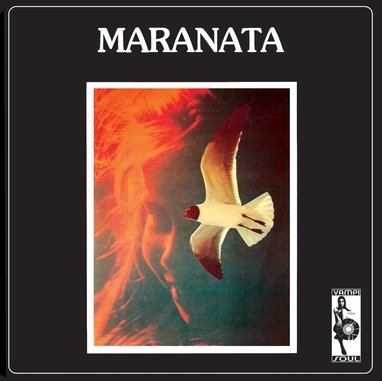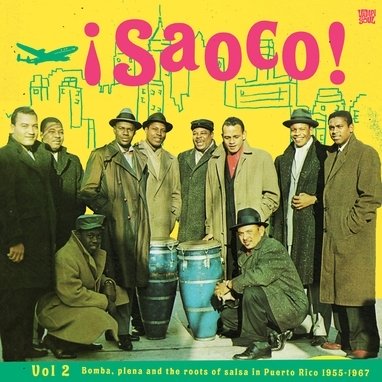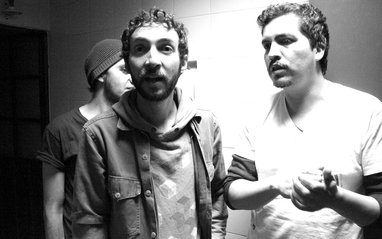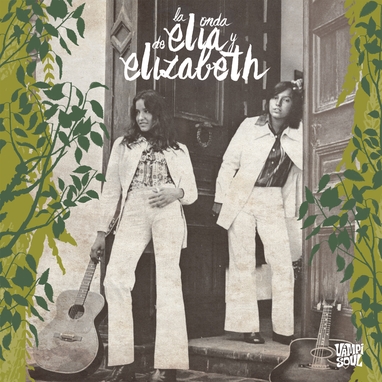Peregoyo y su Combo Vacaná
Mi Buenaventura
22,00€ 10,00€
Vampisoul
Peregoyo y su Combo Vacaná
Mi Buenaventura
The second release for Discos Fuentes by Peregoyo y su Combo Vacaná, recorded circa 1967, is rich with diverse sounds and festive rhythms, from the exotic trance-inducing coastal Afro-Colombian polyrhythmic syncopations of the currulao, abozao chocoano, porro, cumbia and aguabajo to the more well-known genres of Cuban and Puerto Rican origin like descarga, bomba, guaracha and son montuno. The nine-member combo was formed by composer and tenor saxophonist Enrique Peregoyo Urbano Tenorio in the Pacific coastal city of Buenaventura. His stated mission was to modernize the folkloric music traditions of his region, proudly displaying Afro-Indigenous origins and spotlighting previously marginalized musical roots yet playing in a contemporary way with Cuban-inspired instrumentation and arrangements, uniting disparate genres into a commercially
While all four Peregoyo y su Combo Vacaná albums are classics deserving their rightful place in the national musical heritage of Colombia, Mi Buenaventura (recorded circa 1967) is perhaps their most iconic. Their second release for Discos Fuentes is rich with diverse sounds and festive rhythms, from the exotic trance-inducing coastal Afro-Colombian polyrhythmic syncopations of the currulao, abozao chocoano, porro, cumbia and aguabajo to the more well-known genres of Cuban and Puerto Rican origin like descarga, bomba, guaracha and son montuno – Peregoyo and his crew were equally adept at playing all these and more. The nine-member combo was formed by composer and tenor saxophonist Enrique Peregoyo Urbano Tenorio (1917-2007) in the Pacific coastal city of Buenaventura and is said to be the first to make their local Pacífico music traditions an integral part of a commercially presented repertoire. Peregoyo made his recorded debut in 1961 with ‘Mi Peregoyo’ and later backed Afro-folkloric songstress Leonor González Mina on that tune and others. His stated mission was to modernize the folkloric genres of his region as well as play the popular tropical dance music from Cuba, New York and Puerto Rico that in those days was regularly imported to Buenaventura on records brought by merchant marines. In this way Peregoyo’s combo were much like Afro-Puerto Ricans Cortijo y su Combo; both groups were pioneers of their epoch, proudly displaying Afro-Indigenous origins and spotlighting previously marginalized musical roots yet playing in a contemporary way with Cuban-inspired instrumentation and arrangements, uniting disparate genres into a commercially viable whole, thus contributing to the foundation of future developments in transnational tropical Latin music. Peregoyo hand-picked the best local musicians to join him in his mission to update indigenous folkloric idioms, including José Lorenzo Che Benítez (guitar), Henry Carvajal (bass), Álvaro Cifuentes (trumpet, arrangements) and Aristarco Torres (alto saxophone). The band modernized these sounds by transcribing the marimba and percussion-only instrumentation of the original music and playing it with Caribbean dance band instruments in a hot, hard and loose fashion, with a bouncy, jazzy feel supported by enhanced rhythms (Arcesio Chenchudino López and Emiliano Valencia), exciting call-and-response arrangements and haunting melodies. Distinctive vocalist Marcos Antonio Markkitos Micolta, a remarkable personality whose warmth and talent shines on everything he sings, joined in 1962. The word peregoyo is a variant of the local term emperegoyado, given to someone who is always well dressed, a habit instilled in bandleader Enrique Urbano Tenorio from his days as a respected high school music teacher. Vacaná comes from the first letters of the principal regional origins of the band members (VAlle, CAuca and NAriño). The songs tell stories of animals, hunters and ancestral legends, composed by the band or collected by Peregoyo while researching in the humble fishing villages of the coast, and show the true nature of the people of the Pacific region in a simple and direct way. First recording as Peregoyo y su Combo Vacaná for Discos Fuentes in 1966, the band broke up over a financial dispute a few years later at the Feria de Cali while performing with Ricardo Ray. They had a brief comeback decades later, and are acknowledged today as a seminal influence on Colombian music. Certainly, we’re blessed to have these recordings saved for posterity; both Peregoyo and label boss Don Antonio Fuentes valued the true cultural expressions of the local coastal inhabitants but also knew how to arrange, perform, record and package it in such a way that it would have international appeal. The combo’s output stands the test of time, and this reissue presents one of their finest efforts in its original form. Pablo Yglesias aka DJ Bongohead
Productos relacionados
22,00€ 10,00€
The second release for Discos Fuentes by Peregoyo y su Combo Vacaná, recorded circa 1967, is rich with diverse sounds and festive rhythms, from the exotic trance-inducing coastal Afro-Colombian polyrhythmic syncopations of the currulao, abozao chocoano, porro, cumbia and aguabajo to the more well-known genres of Cuban and Puerto Rican origin like descarga, bomba, guaracha and son montuno. The nine-member combo was formed by composer and tenor saxophonist Enrique Peregoyo Urbano Tenorio in the Pacific coastal city of Buenaventura. His stated mission was to modernize the folkloric music traditions of his region, proudly displaying Afro-Indigenous origins and spotlighting previously marginalized musical roots yet playing in a contemporary way with Cuban-inspired instrumentation and arrangements, uniting disparate genres into a commercially
While all four Peregoyo y su Combo Vacaná albums are classics deserving their rightful place in the national musical heritage of Colombia, Mi Buenaventura (recorded circa 1967) is perhaps their most iconic. Their second release for Discos Fuentes is rich with diverse sounds and festive rhythms, from the exotic trance-inducing coastal Afro-Colombian polyrhythmic syncopations of the currulao, abozao chocoano, porro, cumbia and aguabajo to the more well-known genres of Cuban and Puerto Rican origin like descarga, bomba, guaracha and son montuno – Peregoyo and his crew were equally adept at playing all these and more. The nine-member combo was formed by composer and tenor saxophonist Enrique Peregoyo Urbano Tenorio (1917-2007) in the Pacific coastal city of Buenaventura and is said to be the first to make their local Pacífico music traditions an integral part of a commercially presented repertoire. Peregoyo made his recorded debut in 1961 with ‘Mi Peregoyo’ and later backed Afro-folkloric songstress Leonor González Mina on that tune and others. His stated mission was to modernize the folkloric genres of his region as well as play the popular tropical dance music from Cuba, New York and Puerto Rico that in those days was regularly imported to Buenaventura on records brought by merchant marines. In this way Peregoyo’s combo were much like Afro-Puerto Ricans Cortijo y su Combo; both groups were pioneers of their epoch, proudly displaying Afro-Indigenous origins and spotlighting previously marginalized musical roots yet playing in a contemporary way with Cuban-inspired instrumentation and arrangements, uniting disparate genres into a commercially viable whole, thus contributing to the foundation of future developments in transnational tropical Latin music. Peregoyo hand-picked the best local musicians to join him in his mission to update indigenous folkloric idioms, including José Lorenzo Che Benítez (guitar), Henry Carvajal (bass), Álvaro Cifuentes (trumpet, arrangements) and Aristarco Torres (alto saxophone). The band modernized these sounds by transcribing the marimba and percussion-only instrumentation of the original music and playing it with Caribbean dance band instruments in a hot, hard and loose fashion, with a bouncy, jazzy feel supported by enhanced rhythms (Arcesio Chenchudino López and Emiliano Valencia), exciting call-and-response arrangements and haunting melodies. Distinctive vocalist Marcos Antonio Markkitos Micolta, a remarkable personality whose warmth and talent shines on everything he sings, joined in 1962. The word peregoyo is a variant of the local term emperegoyado, given to someone who is always well dressed, a habit instilled in bandleader Enrique Urbano Tenorio from his days as a respected high school music teacher. Vacaná comes from the first letters of the principal regional origins of the band members (VAlle, CAuca and NAriño). The songs tell stories of animals, hunters and ancestral legends, composed by the band or collected by Peregoyo while researching in the humble fishing villages of the coast, and show the true nature of the people of the Pacific region in a simple and direct way. First recording as Peregoyo y su Combo Vacaná for Discos Fuentes in 1966, the band broke up over a financial dispute a few years later at the Feria de Cali while performing with Ricardo Ray. They had a brief comeback decades later, and are acknowledged today as a seminal influence on Colombian music. Certainly, we’re blessed to have these recordings saved for posterity; both Peregoyo and label boss Don Antonio Fuentes valued the true cultural expressions of the local coastal inhabitants but also knew how to arrange, perform, record and package it in such a way that it would have international appeal. The combo’s output stands the test of time, and this reissue presents one of their finest efforts in its original form. Pablo Yglesias aka DJ Bongohead
Productos relacionados
Mi Buenaventura
The second release for Discos Fuentes by Peregoyo y su Combo Vacaná, recorded circa 1967, is rich with diverse sounds and festive rhythms, from the exotic trance-inducing coastal Afro-Colombian polyrhythmic syncopations of the currulao, abozao chocoano, porro, cumbia and aguabajo to the more well-known genres of Cuban and Puerto Rican origin like descarga, bomba, guaracha and son montuno. The nine-member combo was formed by composer and tenor saxophonist Enrique Peregoyo Urbano Tenorio in the Pacific coastal city of Buenaventura. His stated mission was to modernize the folkloric music traditions of his region, proudly displaying Afro-Indigenous origins and spotlighting previously marginalized musical roots yet playing in a contemporary way with Cuban-inspired instrumentation and arrangements, uniting disparate genres into a commercially
While all four Peregoyo y su Combo Vacaná albums are classics deserving their rightful place in the national musical heritage of Colombia, Mi Buenaventura (recorded circa 1967) is perhaps their most iconic. Their second release for Discos Fuentes is rich with diverse sounds and festive rhythms, from the exotic trance-inducing coastal Afro-Colombian polyrhythmic syncopations of the currulao, abozao chocoano, porro, cumbia and aguabajo to the more well-known genres of Cuban and Puerto Rican origin like descarga, bomba, guaracha and son montuno – Peregoyo and his crew were equally adept at playing all these and more. The nine-member combo was formed by composer and tenor saxophonist Enrique Peregoyo Urbano Tenorio (1917-2007) in the Pacific coastal city of Buenaventura and is said to be the first to make their local Pacífico music traditions an integral part of a commercially presented repertoire. Peregoyo made his recorded debut in 1961 with ‘Mi Peregoyo’ and later backed Afro-folkloric songstress Leonor González Mina on that tune and others. His stated mission was to modernize the folkloric genres of his region as well as play the popular tropical dance music from Cuba, New York and Puerto Rico that in those days was regularly imported to Buenaventura on records brought by merchant marines. In this way Peregoyo’s combo were much like Afro-Puerto Ricans Cortijo y su Combo; both groups were pioneers of their epoch, proudly displaying Afro-Indigenous origins and spotlighting previously marginalized musical roots yet playing in a contemporary way with Cuban-inspired instrumentation and arrangements, uniting disparate genres into a commercially viable whole, thus contributing to the foundation of future developments in transnational tropical Latin music. Peregoyo hand-picked the best local musicians to join him in his mission to update indigenous folkloric idioms, including José Lorenzo Che Benítez (guitar), Henry Carvajal (bass), Álvaro Cifuentes (trumpet, arrangements) and Aristarco Torres (alto saxophone). The band modernized these sounds by transcribing the marimba and percussion-only instrumentation of the original music and playing it with Caribbean dance band instruments in a hot, hard and loose fashion, with a bouncy, jazzy feel supported by enhanced rhythms (Arcesio Chenchudino López and Emiliano Valencia), exciting call-and-response arrangements and haunting melodies. Distinctive vocalist Marcos Antonio Markkitos Micolta, a remarkable personality whose warmth and talent shines on everything he sings, joined in 1962. The word peregoyo is a variant of the local term emperegoyado, given to someone who is always well dressed, a habit instilled in bandleader Enrique Urbano Tenorio from his days as a respected high school music teacher. Vacaná comes from the first letters of the principal regional origins of the band members (VAlle, CAuca and NAriño). The songs tell stories of animals, hunters and ancestral legends, composed by the band or collected by Peregoyo while researching in the humble fishing villages of the coast, and show the true nature of the people of the Pacific region in a simple and direct way. First recording as Peregoyo y su Combo Vacaná for Discos Fuentes in 1966, the band broke up over a financial dispute a few years later at the Feria de Cali while performing with Ricardo Ray. They had a brief comeback decades later, and are acknowledged today as a seminal influence on Colombian music. Certainly, we’re blessed to have these recordings saved for posterity; both Peregoyo and label boss Don Antonio Fuentes valued the true cultural expressions of the local coastal inhabitants but also knew how to arrange, perform, record and package it in such a way that it would have international appeal. The combo’s output stands the test of time, and this reissue presents one of their finest efforts in its original form. Pablo Yglesias aka DJ Bongohead
The second release for Discos Fuentes by Peregoyo y su Combo Vacaná, recorded circa 1967, is rich with diverse sounds and festive rhythms, from the exotic trance-inducing coastal Afro-Colombian polyrhythmic syncopations of the currulao, abozao chocoano, porro, cumbia and aguabajo to the more well-known genres of Cuban and Puerto Rican origin like descarga, bomba, guaracha and son montuno. The nine-member combo was formed by composer and tenor saxophonist Enrique Peregoyo Urbano Tenorio in the Pacific coastal city of Buenaventura. His stated mission was to modernize the folkloric music traditions of his region, proudly displaying Afro-Indigenous origins and spotlighting previously marginalized musical roots yet playing in a contemporary way with Cuban-inspired instrumentation and arrangements, uniting disparate genres into a commercially
While all four Peregoyo y su Combo Vacaná albums are classics deserving their rightful place in the national musical heritage of Colombia, Mi Buenaventura (recorded circa 1967) is perhaps their most iconic. Their second release for Discos Fuentes is rich with diverse sounds and festive rhythms, from the exotic trance-inducing coastal Afro-Colombian polyrhythmic syncopations of the currulao, abozao chocoano, porro, cumbia and aguabajo to the more well-known genres of Cuban and Puerto Rican origin like descarga, bomba, guaracha and son montuno – Peregoyo and his crew were equally adept at playing all these and more. The nine-member combo was formed by composer and tenor saxophonist Enrique Peregoyo Urbano Tenorio (1917-2007) in the Pacific coastal city of Buenaventura and is said to be the first to make their local Pacífico music traditions an integral part of a commercially presented repertoire. Peregoyo made his recorded debut in 1961 with ‘Mi Peregoyo’ and later backed Afro-folkloric songstress Leonor González Mina on that tune and others. His stated mission was to modernize the folkloric genres of his region as well as play the popular tropical dance music from Cuba, New York and Puerto Rico that in those days was regularly imported to Buenaventura on records brought by merchant marines. In this way Peregoyo’s combo were much like Afro-Puerto Ricans Cortijo y su Combo; both groups were pioneers of their epoch, proudly displaying Afro-Indigenous origins and spotlighting previously marginalized musical roots yet playing in a contemporary way with Cuban-inspired instrumentation and arrangements, uniting disparate genres into a commercially viable whole, thus contributing to the foundation of future developments in transnational tropical Latin music. Peregoyo hand-picked the best local musicians to join him in his mission to update indigenous folkloric idioms, including José Lorenzo Che Benítez (guitar), Henry Carvajal (bass), Álvaro Cifuentes (trumpet, arrangements) and Aristarco Torres (alto saxophone). The band modernized these sounds by transcribing the marimba and percussion-only instrumentation of the original music and playing it with Caribbean dance band instruments in a hot, hard and loose fashion, with a bouncy, jazzy feel supported by enhanced rhythms (Arcesio Chenchudino López and Emiliano Valencia), exciting call-and-response arrangements and haunting melodies. Distinctive vocalist Marcos Antonio Markkitos Micolta, a remarkable personality whose warmth and talent shines on everything he sings, joined in 1962. The word peregoyo is a variant of the local term emperegoyado, given to someone who is always well dressed, a habit instilled in bandleader Enrique Urbano Tenorio from his days as a respected high school music teacher. Vacaná comes from the first letters of the principal regional origins of the band members (VAlle, CAuca and NAriño). The songs tell stories of animals, hunters and ancestral legends, composed by the band or collected by Peregoyo while researching in the humble fishing villages of the coast, and show the true nature of the people of the Pacific region in a simple and direct way. First recording as Peregoyo y su Combo Vacaná for Discos Fuentes in 1966, the band broke up over a financial dispute a few years later at the Feria de Cali while performing with Ricardo Ray. They had a brief comeback decades later, and are acknowledged today as a seminal influence on Colombian music. Certainly, we’re blessed to have these recordings saved for posterity; both Peregoyo and label boss Don Antonio Fuentes valued the true cultural expressions of the local coastal inhabitants but also knew how to arrange, perform, record and package it in such a way that it would have international appeal. The combo’s output stands the test of time, and this reissue presents one of their finest efforts in its original form. Pablo Yglesias aka DJ Bongohead

